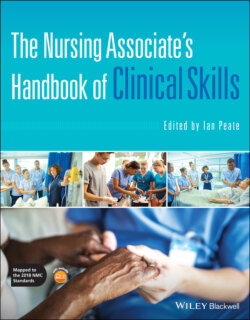Читать книгу The Nursing Associate's Handbook of Clinical Skills - Группа авторов - Страница 24
Transmission Model of Communication
ОглавлениеIn 1949, Shannon and Weaver first described the transmission, or linear, model of communication which consists of a sender creating a message which they send to the receiver without any feedback (see Figure 1.1.). This model describes communication as one way, from sender to receiver, which suggested that the sender and receiver had little to do with the interpretation of the message. The model does recognise physical noise as a communication barrier.
The main issue with one‐way communication is that it does not include feedback which enables the sender and receiver to ensure that the meaning within the message has been understood. Relying on one‐way communication can have an impact on patient outcomes. An example of this might be where a nursing associate advises the patient how to apply a cream but does not check whether the patient has understood the information. This could lead to the cream being applied incorrectly and delaying or even worsening the patient’s condition. Communicating in this way has been described as something you do ‘to’ someone.
Communication models have evolved since the linear model was first described over 70 years ago, but the model was useful in that it established some terms which have subsequently been adopted and developed further (see Table 1.1).
The nursing associate will already have thought about the different aspects of communication. They may have realised that they communicate with colleagues differently when they are tired (sender) and that they adapt their tone of voice when talking to a young child (receiver). They may have considered the message being conveyed by avoiding medical terminology when telling patients about their treatment. They may have considered providing written and verbal instructions to convey the information (code). They will have considered the channel of communicating, for example, if a patient cannot hear, they may have written down the message or have taken the patient into a side room away from the noise of the ward environment.
Figure 1.1 Transmission model of communication.
Source: Adapted from Shannon & Weaver (1949).
Table 1.1 Common communication terms.
Source: Adapted from Kiernan (2015).
| TERM | MEANING |
|---|---|
| Sender/receiver | The sender is the source of the communication. Anyone who is audience to the message is referred to as the receiver. |
| Message | The information being conveyed. |
| Code | Sometimes referred to as encoding and decoding. Encoding can be defined as transforming an abstract idea into a communicable message, using words, symbols, pictures, symbols and sounds. Decoding is when the receiver interprets the message and comes to an understanding about what the source is communicating. |
| Channel | The way the code is conveyed, for example, it may be easier to present complex information in a graph rather than written word alone. |
| Noise | Communication barrier. |
